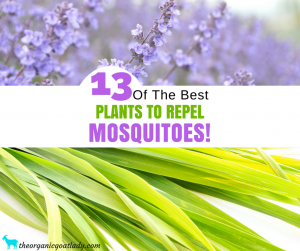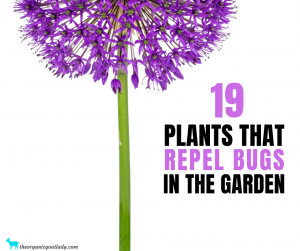Are you looking for a natural way to get rid of roaches? Are you wondering what plants repel roaches? Here are a list of plants that you can utilize for their pest-repelling properties as well as some additional natural rodent repellent options.
This site contains affiliate links. If you make a purchase using one of these links, I may earn a commission. Please click here for more information about cookies collected and our privacy policy.
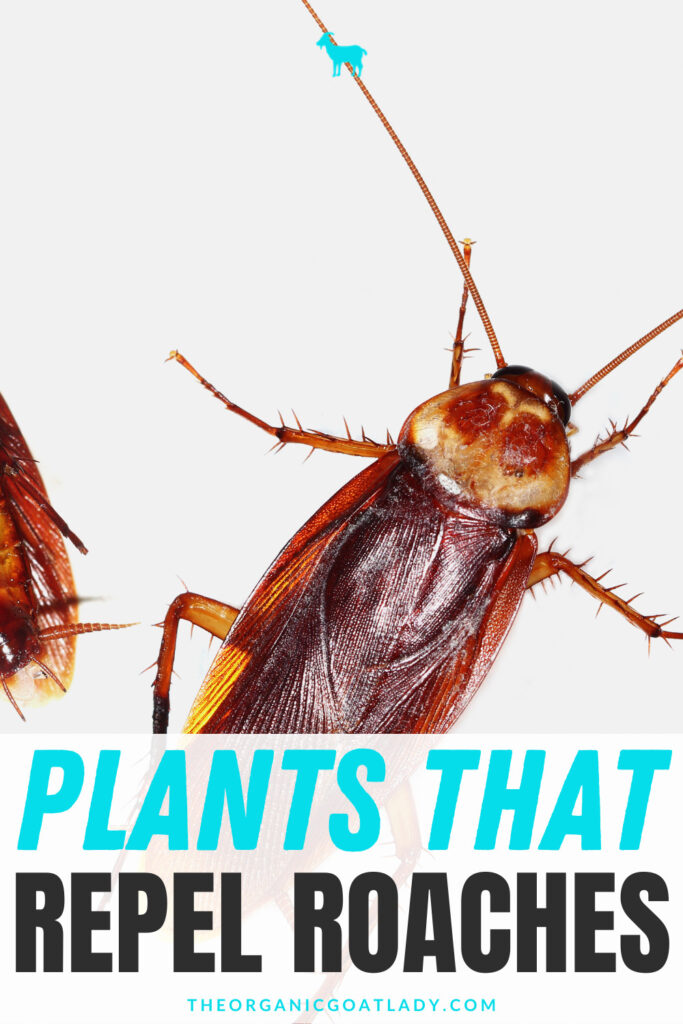
What plants repel roaches?
There are several plants that are believed to have natural repellent properties against roaches, although their effectiveness may vary. Keep in mind that while these plants may help deter roaches to some extent, they should not be relied upon as the sole method of pest control.
Below you will find, in addition to the roach repelling plants, a list of natural insect repellent ideas to use. Incorporating as many things as possible is the best way to make your efforts more effective.
Types of Roaches
There are several types of roaches, but the most common ones that are known to infest homes and buildings are:
1. German Cockroach (Blattella germanica): German cockroaches are one of the most common and troublesome species of roaches. They are small, light brown or tan in color, and have two distinct dark stripes on their pronotum (the shield-like structure behind their head). They are prolific breeders and can quickly infest homes and businesses.
2. American Cockroach (Periplaneta americana): American cockroaches are large and reddish-brown in color. They are often referred to as “palmetto bugs” in the southern United States. These roaches are known for their ability to fly short distances. They typically infest damp areas like basements and sewers.
3. Oriental Cockroach (Blatta orientalis): Oriental cockroaches are dark brown or black and are often found in dark, damp, and cool areas. They are sometimes called “water bugs” because they are commonly found in basements, crawl spaces, and sewer systems.
4. Brown-Banded Cockroach (Supella longipalpa): Brown-banded cockroaches are smaller than German cockroaches and are light brown with distinctive bands across their abdomen. They tend to infest areas with higher temperatures and are often found in bedrooms and living spaces.
5. Smokybrown Cockroach (Periplaneta fuliginosa): Smokybrown cockroaches are dark brown to black and are known for their smoky appearance. They are primarily outdoor roaches but can enter homes seeking shelter and food.
6. Asian Cockroach (Blattella asahinai): Asian cockroaches are similar in appearance to German cockroaches but are typically found outdoors. They can be mistaken for German cockroaches and are attracted to light sources at night.
7. Australian Cockroach (Periplaneta australasiae): Australian cockroaches are reddish-brown and are primarily found in outdoor environments. They may enter buildings but are less common as indoor pests compared to some other species.
8. Wood Cockroach (Parcoblatta spp.): Wood cockroaches are outdoor roaches that primarily infest decaying wood, such as tree stumps and logs. They are not considered significant indoor pests.
It’s important to identify the specific type of roach you are dealing with because the treatment and prevention methods may vary. In cases of severe infestations, it’s advisable to consult with a pest control professional who can accurately identify the roach species and provide effective control measures.
Why Repel Roaches?
There are several important reasons why you should try to repel or control roaches if you encounter them in your home or business:
1. Health Concerns: Roaches can carry and spread diseases, including Salmonella, E. coli, and various pathogens. They can contaminate food and food preparation surfaces with bacteria from their bodies and excrement, posing a risk to human health.
2. Allergies and Asthma: Roaches can trigger allergies and exacerbate asthma symptoms in some individuals. Roach allergens, such as proteins found in their saliva, droppings, and shed skin, can become airborne and lead to respiratory issues.
3. Food Contamination: Roaches are attracted to food sources, and their presence can lead to food contamination. They can chew through packaging and leave behind feces and saliva on food items, rendering them unsafe for consumption.
4. Property Damage: Roaches can cause damage to property by chewing on paper, fabrics, and even electrical wiring. This chewing behavior can lead to fires and costly repairs.
5. Reputation and Comfort: Roaches can have a negative impact on your reputation if you own a business, restaurant, or rental property. Even in a residential setting, a roach infestation can be embarrassing and uncomfortable for residents and guests.
6. Rapid Reproduction: Roaches reproduce quickly. A single female cockroach can produce hundreds of offspring in a year. If left uncontrolled, a small roach problem can escalate into a large infestation in a short time.
7. Aesthetics: Roaches are considered pests due to their unsightly appearance and the fear or disgust they may evoke in people. Most people prefer to have a roach-free environment for aesthetic and psychological reasons.
8. Preventive Measures: Taking steps to repel roaches can prevent infestations from occurring in the first place. Prevention is often easier and more cost-effective than dealing with a full-blown infestation.
To address these concerns and maintain a healthy and comfortable living or working environment, it’s essential to take measures to repel and control roaches.
Best Plants to Repel Roaches
Here are some plants that are commonly thought to repel roaches:
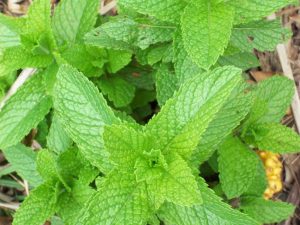
1. Mint: Mint plants, such as peppermint and spearmint, are known for their strong fragrance, which many people find pleasant but roaches do not. Planting mint around entry points to your home or in problem areas may help deter roaches.
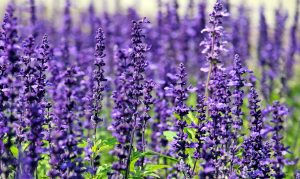
2. Lavender: Lavender is another plant that roaches dislike. The smell of lavender is said to repel them. Placing lavender sachets or growing lavender plants near windows and doors can help keep roaches away.
3. Bay Leaves: Bay leaves have a pungent aroma that is unpleasant to roaches. You can place dried leaves in pantry shelves and other areas where roaches may be a problem.
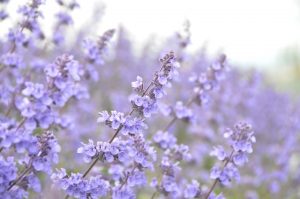
4. Catnip: Catnip, a member of the mint family, contains a compound called nepetalactone that repels roaches. Planting fresh catnip around your home or using sachets of dried catnip in roach-prone areas can be effective.

5. Marigold: Marigold’s beautiful flowers contain a compound called pyrethrum, which is used in some insect repellents. While marigolds may not be as effective as other methods, planting them in your garden can potentially deter roaches and other pests.
Roach-Repelling Plant
Here are some additional repellent plants that are said to work as natural cockroach repellents.
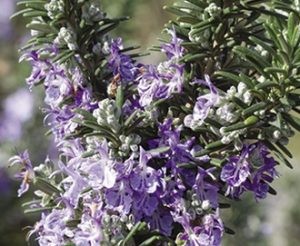
6. Rosemary: Rosemary is an aromatic herb that can be grown indoors or outdoors making it a great addition to your herb garden. Its strong scent is said to deter roaches and other pests. Place potted rosemary near windows and doors to help keep roaches away.

7. Chrysanthemums: Chrysanthemums contain a natural insect-repelling compound called pyrethrin, which is commonly used in insecticides. Planting chrysanthemums in your flower beds or vegetable garden can help deter roaches and other insects.
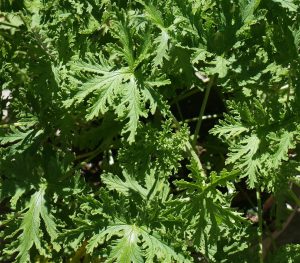
8. Citronella: Citronella is well-known for its ability to repel mosquitoes, but it may also have some effectiveness against roaches. You can grow citronella plants in pots or use citronella candles and oils to deter roaches indoors.

9. Basil: Basil is another aromatic herb that can help repel roaches due to its strong smell. Plant basil in pots near entry points to your home or in areas where roaches are a problem.

10. Lemon Balm: Lemon balm is a member of the mint family and has a lemony scent. It can be used to deter roaches by planting it around your home or using sachets of dried lemon balm in problem areas.
11. Boricola (Coleus canina): Also known as “scaredy cat plant” or “Pee-Off Plant,” boricola is a perennial plant that emits an odor that is offensive to roaches and cats. It can be grown in gardens to help deter roaches and keep cats away from your property. You can find more Plants to Repel Cats here.
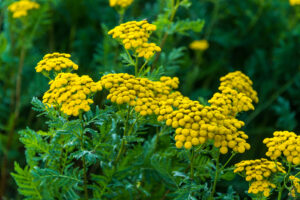
12. Tansy: Tansy is a herbaceous plant with a strong, camphor-like scent that some people believe repels roaches. You can plant tansy in your garden or use dried tansy in sachets to deter roaches indoors.
While these plants may have some repellent properties, it’s essential to understand that they are not a guaranteed solution for controlling roaches, especially in cases of severe infestations.
Natural Roach Repellent
Natural ways to repel roaches can be effective as part of an integrated pest management approach. Here are some natural methods to help repel roaches from your home:
1. Maintain Cleanliness:
– Roaches are attracted to food crumbs, spills, and scraps. Keep your kitchen and dining areas clean, and promptly clean up any food residue.
– Store food in airtight containers to prevent roaches from accessing it.
– Empty the trash regularly, and keep trash cans clean.
2. Seal Entry Points:
– Roaches can enter through small cracks and openings. Seal gaps around windows, doors, and utility openings with caulk or weatherstripping.
– Inspect and repair any plumbing leaks, as roaches are attracted to moisture.
3. Use Natural Repellents:
– Essential Oils: Some essential oils, such as lavender essential oil, peppermint oil, eucalyptus oil, cedarwood oil, and citronella oil, are believed to repel roaches. Create a solution by mixing a few drops of essential oil with water in a spray bottle and spray it in roach-prone areas.
– Bay Leaves: As mentioned above, roaches dislike the scent of bay leaves. Place dried bay leaves in cabinets, pantry shelves, or other areas where roaches are a problem.
– Catnip: Catnip, as we discussed, contains a compound called nepetalactone, which can repel roaches. You can plant catnip around your home or use dried catnip in sachets.
4. Boric Acid:
– Boric acid is a natural substance that is effective against roaches. It can be sprinkled in areas where roaches are active, such as behind appliances or in dark corners. Be cautious when using boric acid in homes with pets or small children.
5. Diatomaceous Earth:
– Food-grade diatomaceous earth is a natural, powdery substance that can be sprinkled in roach-infested areas. It damages the roaches’ exoskeletons and dehydrates them. Ensure you use food-grade diatomaceous earth, and wear a mask when applying it.
6. Cucumber Slices:
– Some people believe that the smell of cucumbers repels roaches. Place cucumber slices or peels in areas where roaches are seen.
7. Citrus Peels:
– The scent of citrus, such as lemon and orange peels, can deter roaches. Place peels in roach-prone areas.
8. Clean With Vinegar:
– White vinegar can be used as a natural cleaner. Its strong odor may deter roaches. Mix equal parts water and white vinegar and use it to clean surfaces in the kitchen and bathroom.
9. Keep a Clean Yard:
– Trim bushes and trees away from your home to eliminate hiding spots for roaches.
– Remove debris and leaf litter from your yard, as roaches can find harborage in outdoor areas.
Remember that natural methods may not provide complete control if you have a severe roach infestation. In such cases, it’s best to consult with a pest control professional who can assess the situation and recommend appropriate treatments.
Plants That Repel
If you are looking to repel other animals from your yard and garden be sure to check out:

